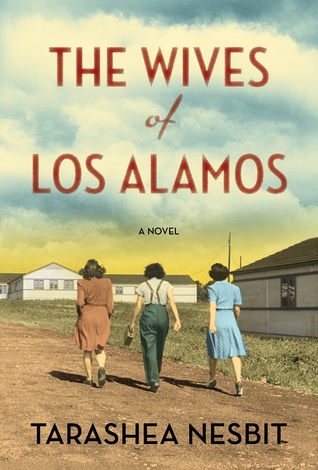 This seems to be a contentious book for one reason and one reason only: it's written in first-person plural. Pretty much every review about it begins that way, and if I had read them before I requested the book from the library, I probably wouldn't have picked it up. It doesn't have a solid core narrative. It doesn't have real, distinct characters; different women are mentioned by name at several points, but no one is ever really given the chance to develop because of the amorphous "we" talking about "our" sometimes contradictory experiences. I understand why this device was used; it's supposed to give you a feel for the lives of the women of Los Alamos as a whole, instead of just picking or making up one or two to flesh out more fully and stand in for the rest. It's meant to capture a wider range of experiences. Is it successful? I didn't really think so. Some of the women are so obviously outsiders that they're clearly not contained within the "we," and that means that their experiences are completely left out of the book.
This seems to be a contentious book for one reason and one reason only: it's written in first-person plural. Pretty much every review about it begins that way, and if I had read them before I requested the book from the library, I probably wouldn't have picked it up. It doesn't have a solid core narrative. It doesn't have real, distinct characters; different women are mentioned by name at several points, but no one is ever really given the chance to develop because of the amorphous "we" talking about "our" sometimes contradictory experiences. I understand why this device was used; it's supposed to give you a feel for the lives of the women of Los Alamos as a whole, instead of just picking or making up one or two to flesh out more fully and stand in for the rest. It's meant to capture a wider range of experiences. Is it successful? I didn't really think so. Some of the women are so obviously outsiders that they're clearly not contained within the "we," and that means that their experiences are completely left out of the book. Each chapter has a theme, such as "Children" or "Foreigners," and the snippets that compose each chapter--because each chapter is composed of a series of one-paragraph snippets, instead of a more traditional narrative--adhere to that theme. It's a sort of experimental style, and while some people loved it, I didn't. I didn't hate it. I did hate it to begin with, but as with most writing, I got used to it after a while, and it didn't grate on my nerves so much. But I never really liked it, and was left feeling like Nesbit could have offered a much richer picture of Los Alamos if she had just been fuller in her telling. I guess that's just my preference; I like books with real characters and central narratives, even if those narratives don't move quickly and are more character-driven than anything else. An amorphous, ever-changing central figure who isn't even one figure but a conglomerate of many left me feeling like I was reading about a hive mind, which is kind of demeaning to a group of women who no doubt went through a lot of hardships to support their husbands.
By choosing the narrative style she did, Nesbit avoided a great deal of detail. This probably saves her from being savaged by people who are sticklers for historical accuracy, but I felt it distanced me more than intrigued me, and I felt left out more than anything else. A novel needs to draw readers in and connect them with the characters, and I felt that wasn't accomplished here; looking at other reviews, some people clearly disagree, but hey, that's the nature of personal preferences, and I guess we'll have to agree to disagree on this one. To me, this was an okay book, with a really good premise--I feel like these women haven't had a lot of historical fiction written about them, and they are truly fascinating subjects--but it just fell flat because of its strange delivery. Experimental styles, I feel, are sometimes better left to subjects that have already been widely explored in more traditional mediums, as then the new style brings a new light to the subject. I'm not sure this particular subject, these women and this place and time, were quite ready for being experimented with before we were better acquainted.
2 stars out of 5.
No comments:
Post a Comment